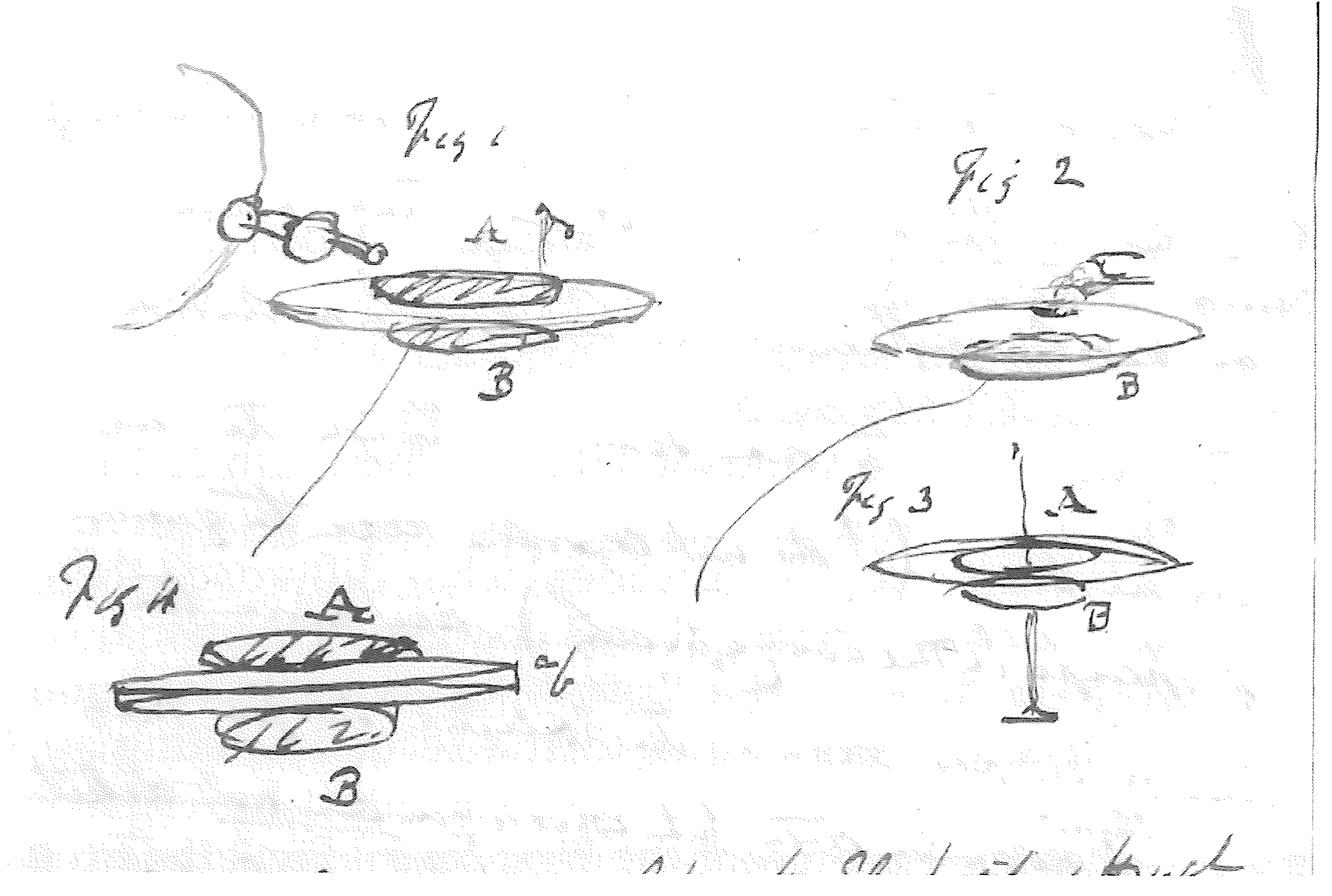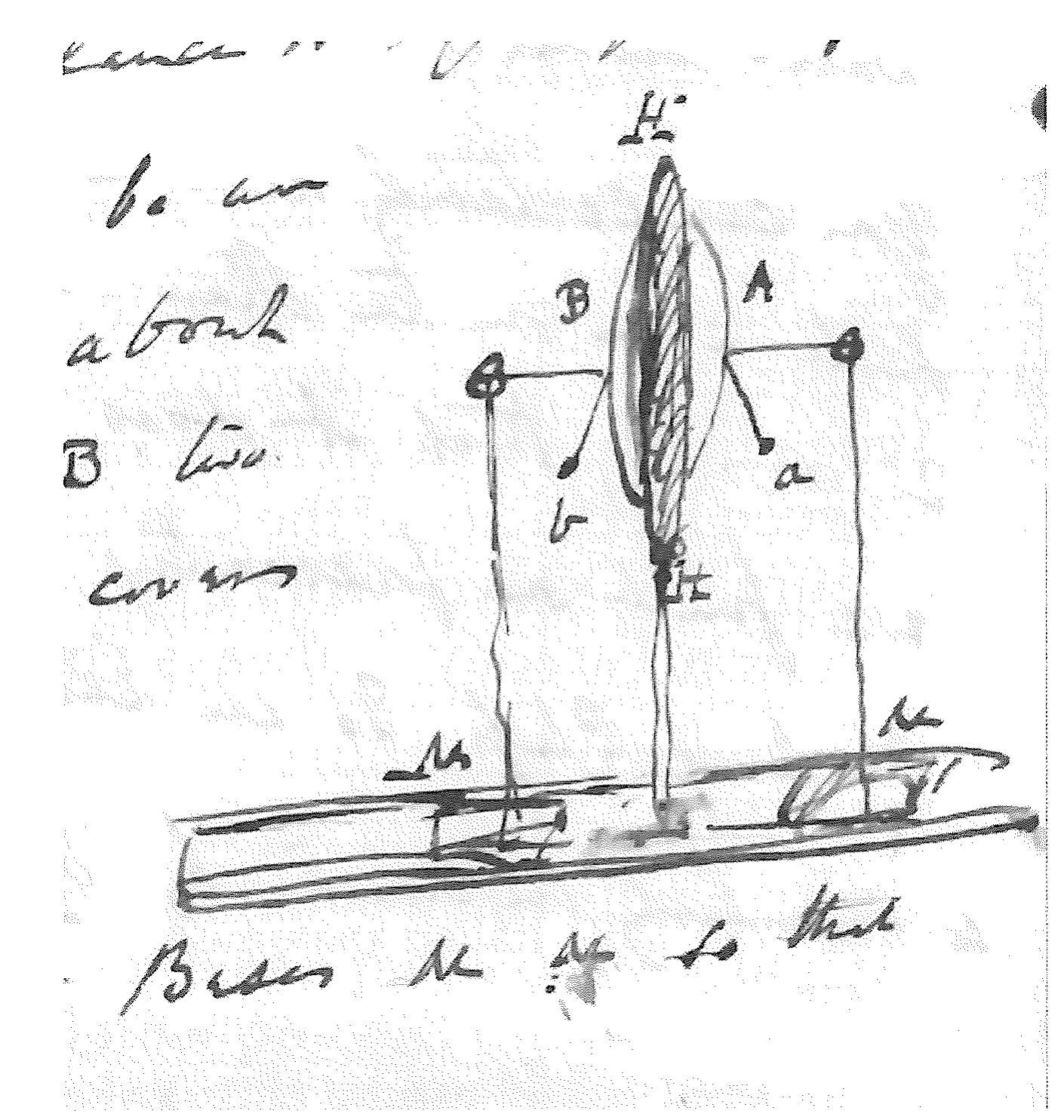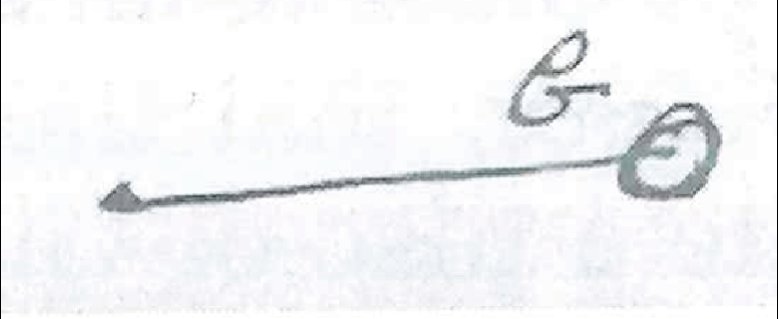William Snow Harris to Faraday 22 December 1860
6 Windsor Villas | Plymouth 22 December 1860
My dear Faraday
Did it ever occur to you to consider, what difference there is, if any between the state of a coated Plate of Glass charged in the usual way directly from the Electrical Machine - and a Plate of Glass excited on one side with a coating on the other side only - and then a second Coating applied after the manner of the Electrophorus and an Experiment by Cigna1.- To make myself very clear Let Fig 1 represent the First case .. Fig 2 the excitation case by Friction over an under coating B. Fig 3 the subsequent application of an upper Coating A - It appears to me that the latter case Fig 3 is really not the same thing as Fig 12 - or is it a charge at all of the system in the way of Fig 1 The small Spark which is perceptible on joining A and B suppose B insulated is so far as I see a mere affair of the two coatings - If I unite A and B Fig 1 by a bent metal Wire - I neutralize or discharge that system - and I can get nothing more out of the Cover A except so far as some small residuary charges may be obtained in the way you have described Expt. Researches 12463 - But in the Case of Fig 3 when I unite the coatings AB by a metal wire I merely equalize the forces between the Coatings whatever may be the consequent change in the intervening Dielectric - I do not discharge the system as in Case Fig 1 - This is seen by the continued bearing off Electricity by Induction through the Instrumentality of the Cover[.]
In Fig 1 we charge & Polarize the system by Foreign aid as it were. In Fig 3 & 2 we merely develop the Electricity of the Glass itself - There is certainly some difference here which it might be well to elucidate[.] Now with respect to your Expt. sec 1246 I have no doubt of the accuracy of your observations but I think nevertheless there is more yet behind.- Beccaria4 says that in a compound Glass Plate of 2 laminae Fig 4 - coated as before; each ½ plate will be + on one Side and - on the other.
I have been lately studying with very much attention this subject. I have repeated all the Experiments of Cigna, Symmer5 & others - I have certainly found with you that most commonly on separating the Plates one Plate is + without any negative Induction - the other - without any positive Induction-
But all these sort of Experiments are very precarious + I think in situ one surface must be + & the other - because the
two plates a & b Fig 4 cohere & that
 forcibly - now as opposite Electricitys attract it follows that the
near surfaces must be in opposite Electrical states - It is the act of
separation which disturbs the condition[.]
forcibly - now as opposite Electricitys attract it follows that the
near surfaces must be in opposite Electrical states - It is the act of
separation which disturbs the condition[.]
You can certainly have a glass Plate + on one side & - on the other - Now
let me just remark, that it does not follow because we find on presenting each
side of an Electrified Plate of Glass to an Electroscope - the Electroscope is
similarly influenced by both sides, that therefore both
sides of the Glass are Electrified - suppose I excite a disc of Glass on one surface only - that excitation may as easily
influence an electroscope through the Glass on the one side as through the air
on the other - (I do not consider here the question of Specific Inductive
Capacity.) - nay more the side or surface opposite the excited surface may have
a slight negative state but which you cannot detect
because the positive Electricity of the opposite Surface (suppose the
excitation +) prevails & conversely Well as I said - you can obtain both +
& - coincident surfaces if you will balance or equalize the force Let HH -
annexed Fig 5 be an insulated Glass disc about a foot in Diameter AB
 two moveable Coatings or covers about 7 Inches diameter set upon
vertical Insulators & moveable Bases NN so that the Coatings may be
withdrawn on each side from the Glass, let ab be two Electroscopes of
divergence connected with the coatings AB. Charge either side A in the usual
way, giving side B, a temporary communication with the Ground. Then
Electroscope a on the charged side diverges - but Electroscope b exhibits no
Induction - connection with Ground being withdrawn - still we can not doubt but
that the whole Dielectric is Polarized - In fact if we withdraw the Coatings
Electroscope b diverges with neg Electricity whilst a is Positive - But you get
no negative Indication from the Glass - both sides appear to give positive
Electricity - but that is because the Positive Electricity of the excited side
A predominates.
two moveable Coatings or covers about 7 Inches diameter set upon
vertical Insulators & moveable Bases NN so that the Coatings may be
withdrawn on each side from the Glass, let ab be two Electroscopes of
divergence connected with the coatings AB. Charge either side A in the usual
way, giving side B, a temporary communication with the Ground. Then
Electroscope a on the charged side diverges - but Electroscope b exhibits no
Induction - connection with Ground being withdrawn - still we can not doubt but
that the whole Dielectric is Polarized - In fact if we withdraw the Coatings
Electroscope b diverges with neg Electricity whilst a is Positive - But you get
no negative Indication from the Glass - both sides appear to give positive
Electricity - but that is because the Positive Electricity of the excited side
A predominates.
Replace the Covers & repeat the charge - Electroscope a being divergent and
b tranquil - remove the connection of b with the Ground - and now by an
Insulated metal Ball G of an inch Diameter
 abstract Electricity from the predominant side A by degrees
Electroscope b on the negative side begins to rise - go on untill the
divergence of a & b is alike or nearly so again withdraw the Covers: one is
+ the other - of course - but now the glass surfaces exhibit the same opposite
states one is + the other –[.] That is suppose you present one to Gold Leaves
abstract Electricity from the predominant side A by degrees
Electroscope b on the negative side begins to rise - go on untill the
divergence of a & b is alike or nearly so again withdraw the Covers: one is
+ the other - of course - but now the glass surfaces exhibit the same opposite
states one is + the other –[.] That is suppose you present one to Gold Leaves
 divergent with either Electy., (say Positive) the one side of the
Glass increases the Divergence whilst the other causes the Leaves to close[.]
But I must not tax your patience further – Avogadro6 has
written most capitally on this subject - he draws a distinction between
Electricity of the Coatings - Electricity of the Glass &c. &c
Nicholsons7 Journal - Octavo - Vol 21 page 2888[.]
divergent with either Electy., (say Positive) the one side of the
Glass increases the Divergence whilst the other causes the Leaves to close[.]
But I must not tax your patience further – Avogadro6 has
written most capitally on this subject - he draws a distinction between
Electricity of the Coatings - Electricity of the Glass &c. &c
Nicholsons7 Journal - Octavo - Vol 21 page 2888[.]
believe me to be | My dear Faraday | always yours most sincerely | W. Snow Harris
Dr. Faraday
Bibliography
AVOGADRO, Amedeo (1808): “Considerations on the State in which a Stratum of nonconducting Matter must be, when interposed between Two Surcaes ended with opposite Electricities”, Nicholson J., 21: 278-90.
FARADAY, Michael (1838a): “Experimental Researches in Electricity. - Eleventh Series. On Induction”, Phil. Trans., 128: 1-40.
Please cite as “Faraday3931,” in Ɛpsilon: The Michael Faraday Collection accessed on 30 April 2024, https://epsilon.ac.uk/view/faraday/letters/Faraday3931